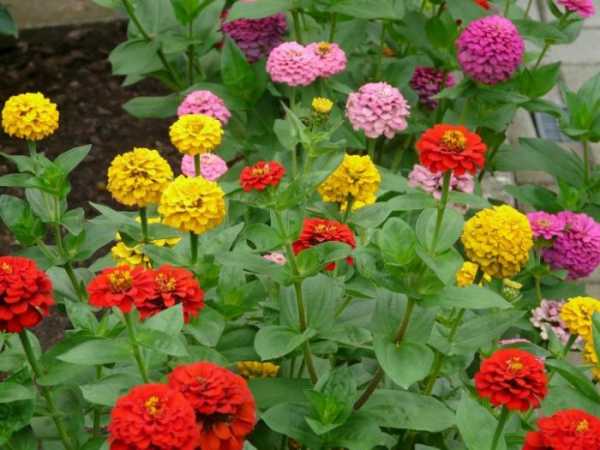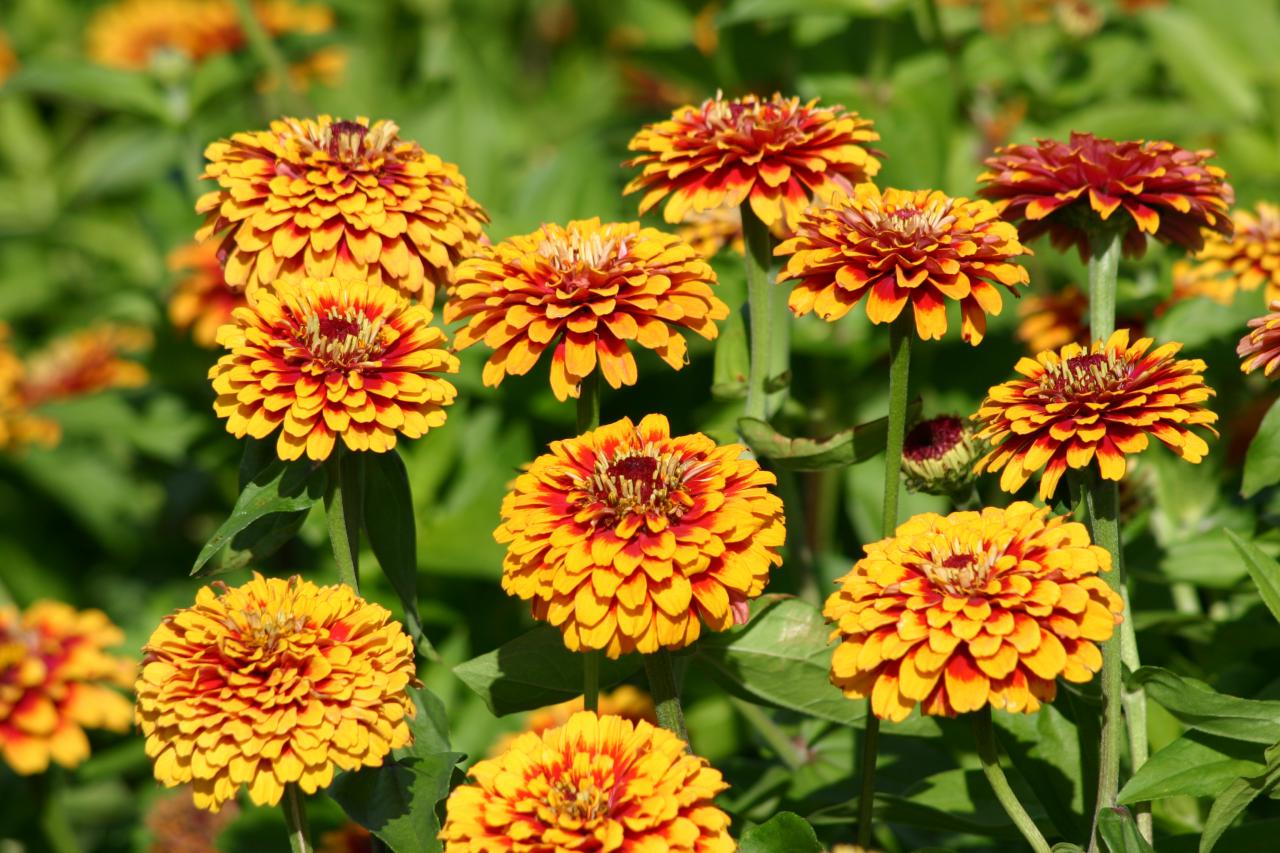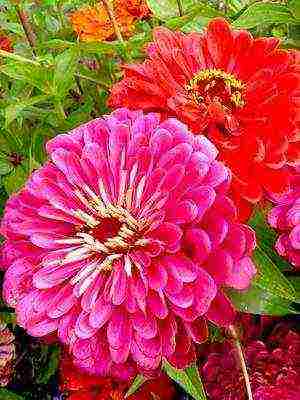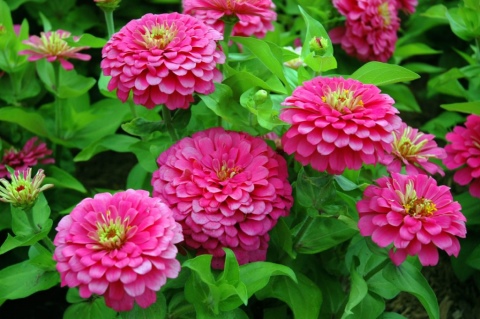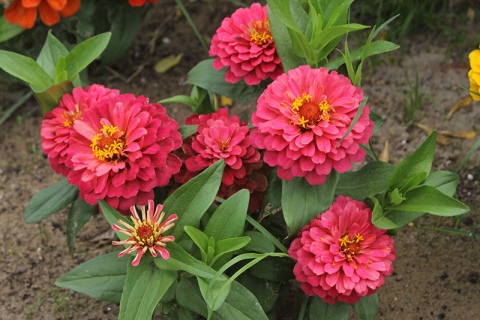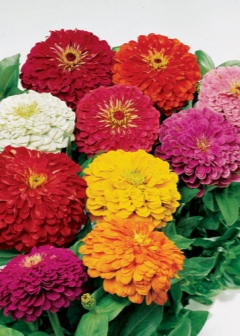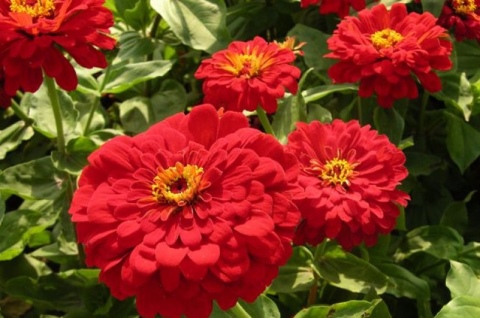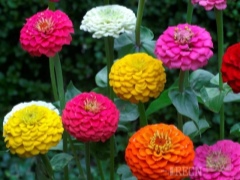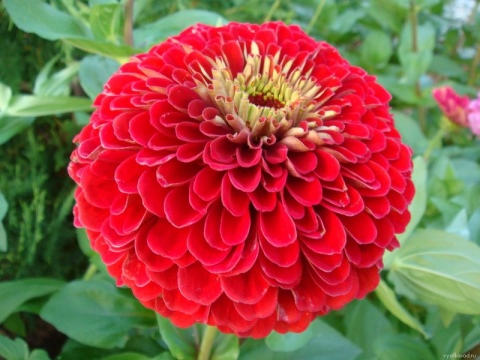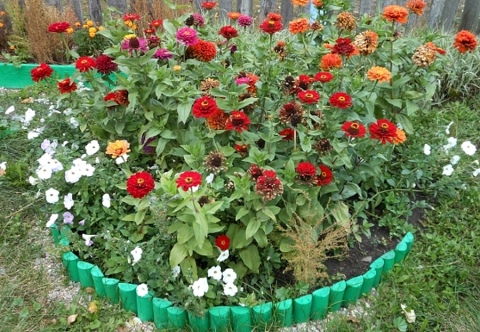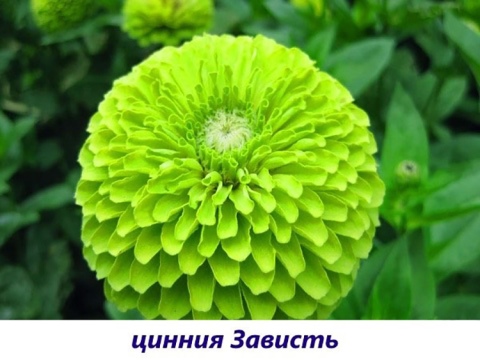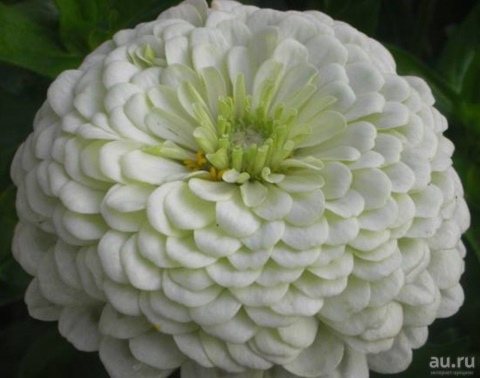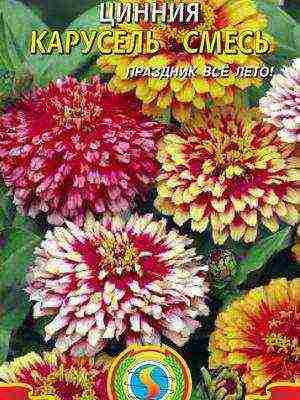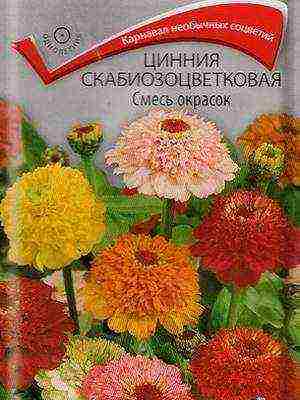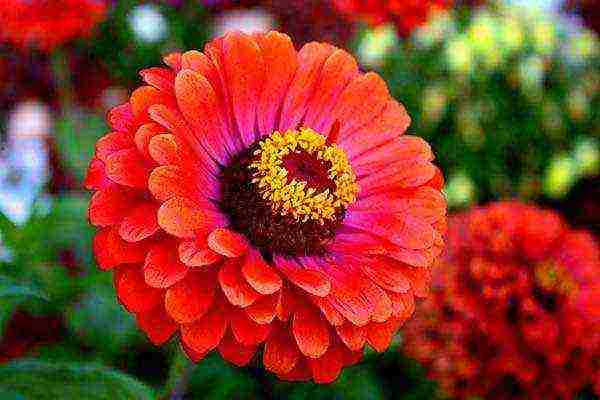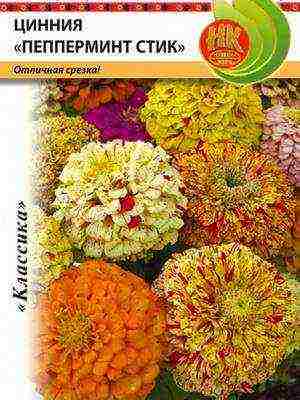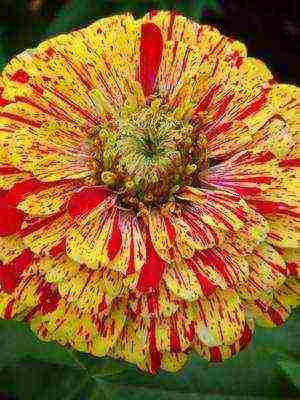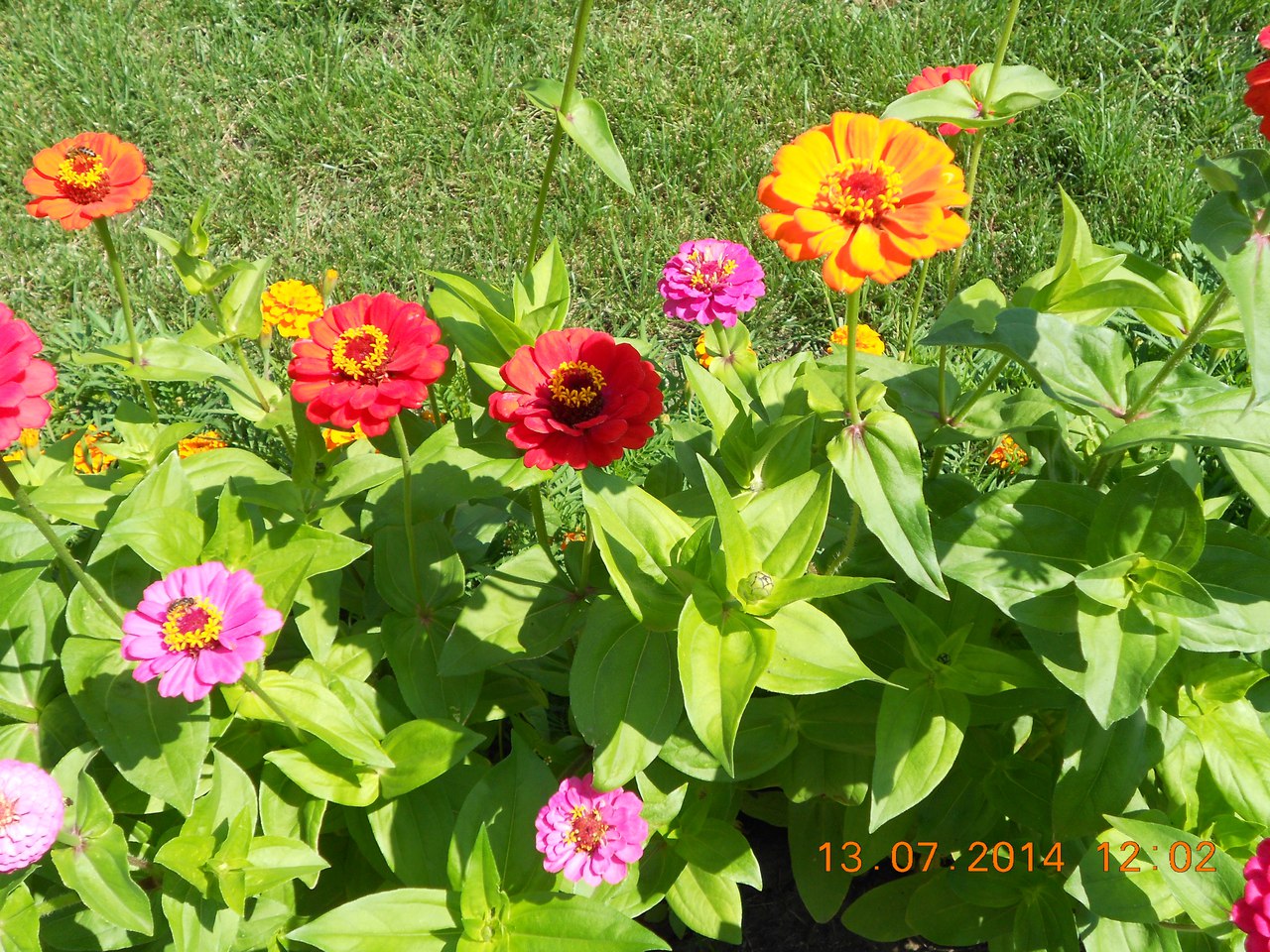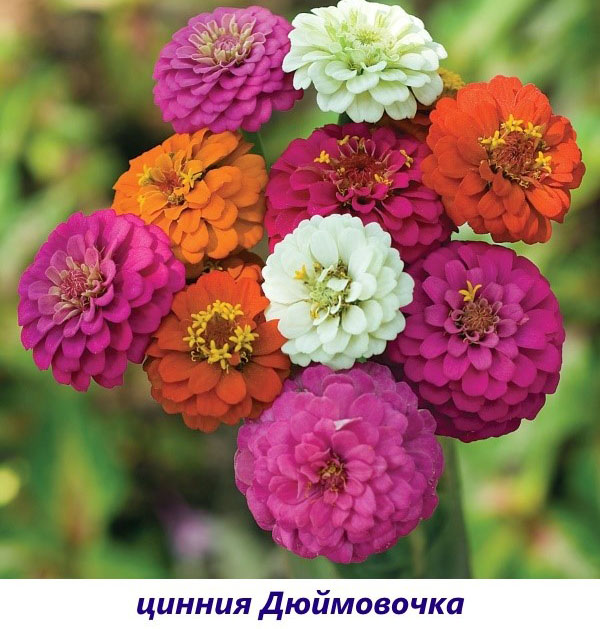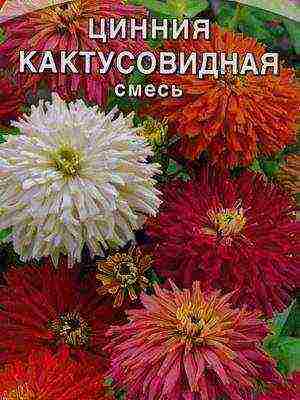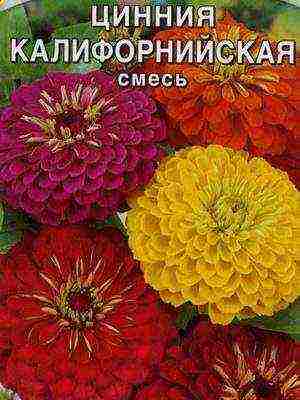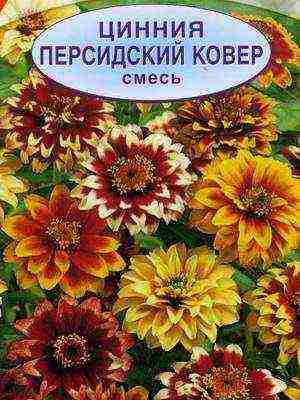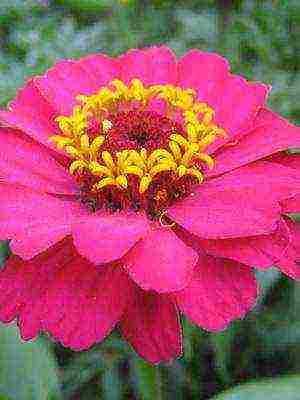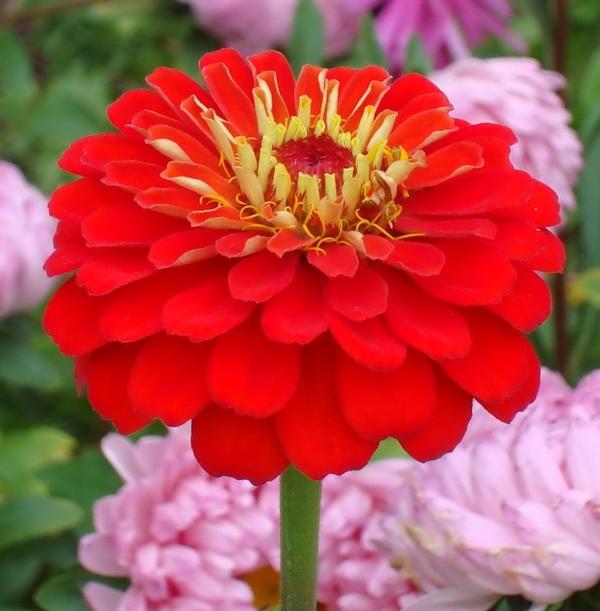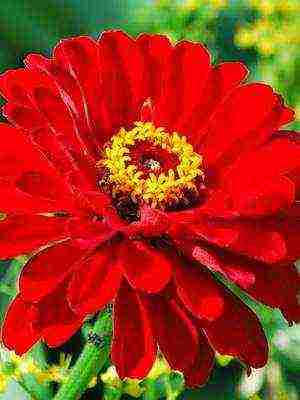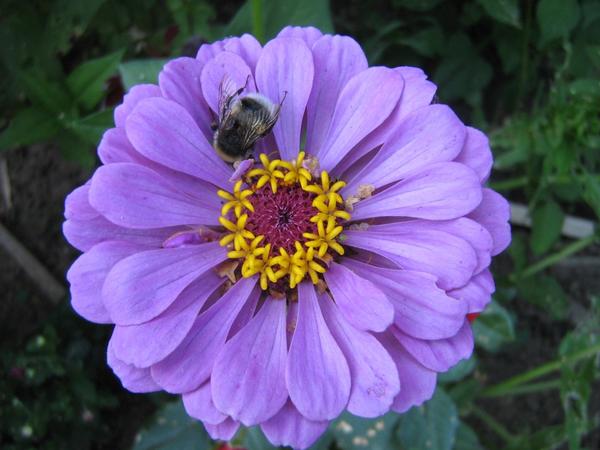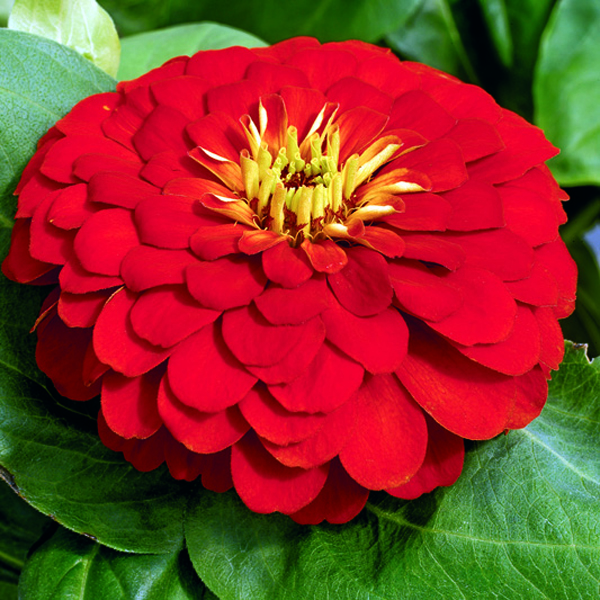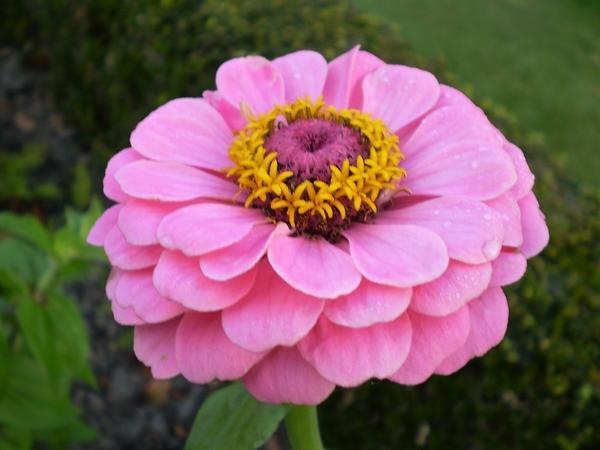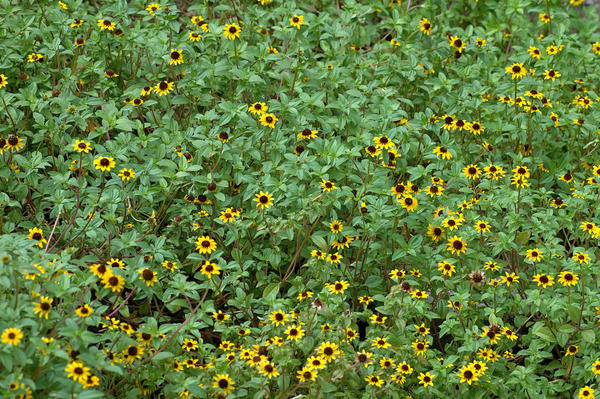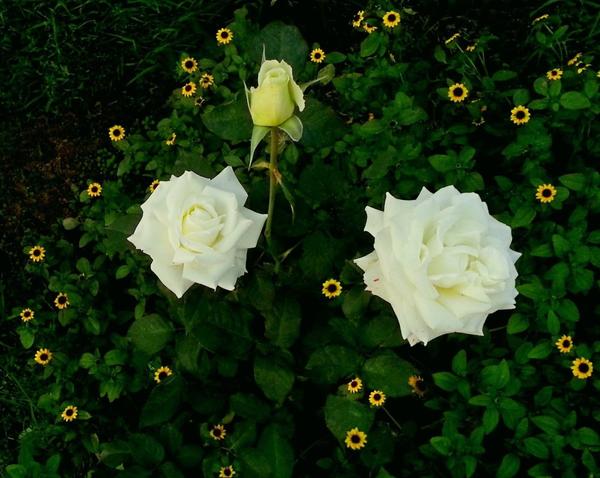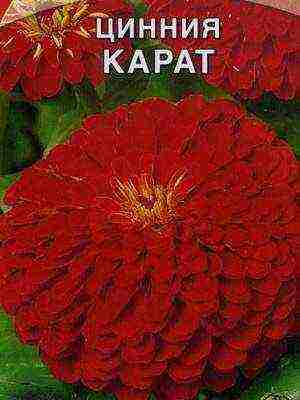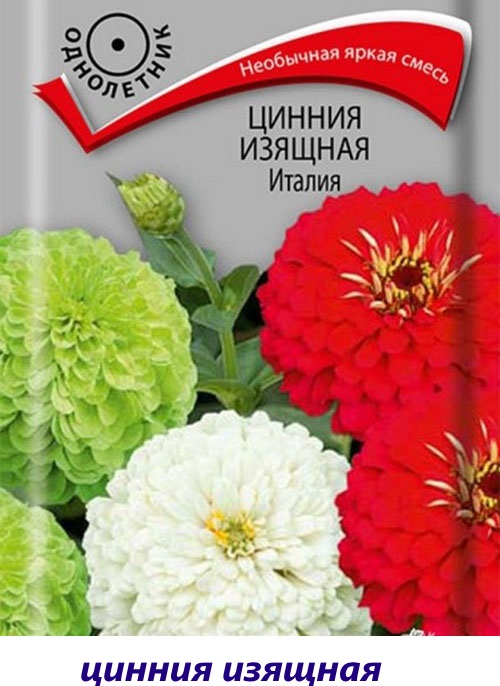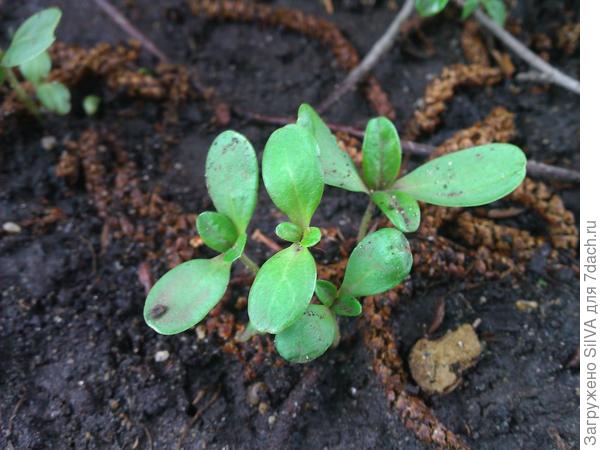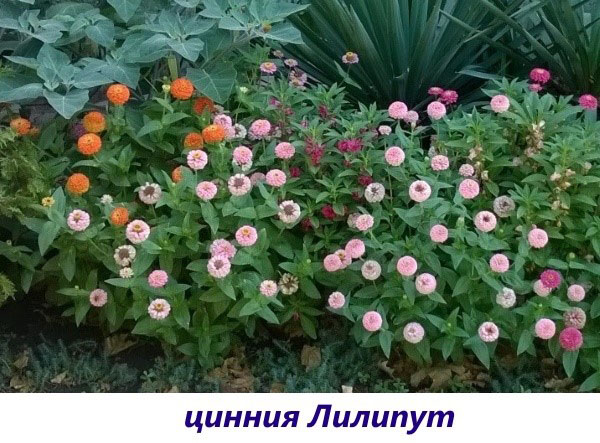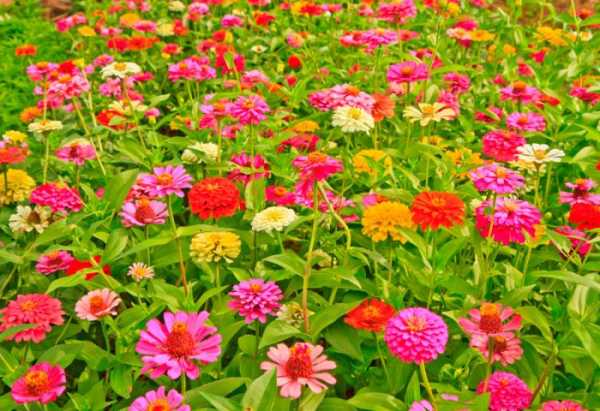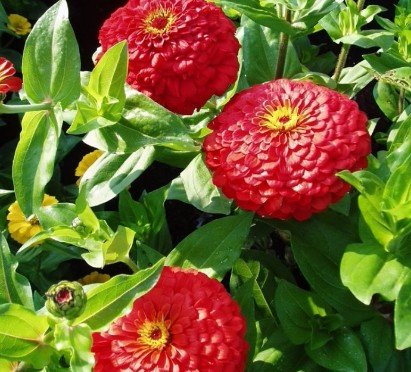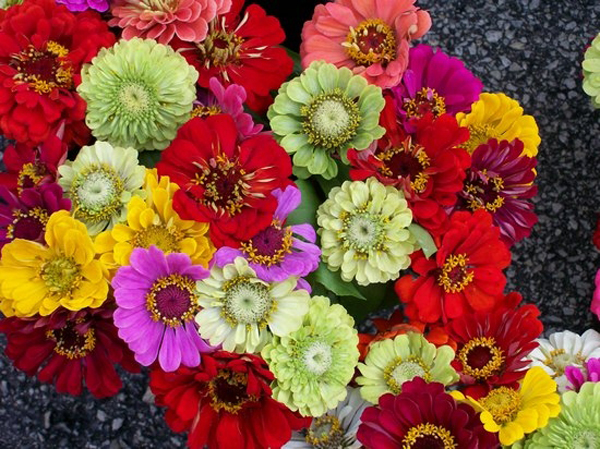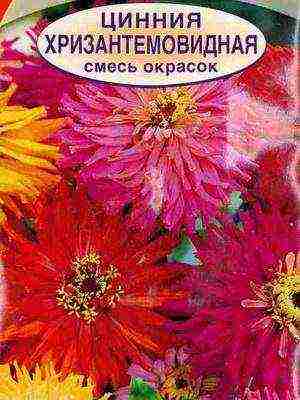Popular varieties of low-growing zinnias
As mentioned earlier, undersized zinnias are used to decorate borders. There are an incredible variety of varieties.
Zinnia Lilliput
The bush is formed of compact size, the height does not exceed 0.5 m. The erect stems are covered with small leaves, the inflorescences are also small in size. Visually, in their shape, they resemble small pom-poms, therefore this variety is sometimes also called pom-pom.
Zinnia Little Red Riding Hood (Rotcopchen)
This flowering crop is a low-growing annual shrub with the following varietal characteristics:
- the surface of the petals is densely double, have a cherry or deep red hue;
- the culture blooms magnificently and for a long time (subject to agrotechnical rules);
- the height of the bush does not exceed 20 cm;
- the circumference of the open flowers is about 4 cm.
For your information! The culture has excellent indicators of frost resistance.
Zinnias Tom-Thumb (Tom-Thumb)
Tom-Thumb has the following characteristics:
- the plant is formed in the form of a compact bush, the height is no more than 30 cm;
- leaves are very close to each other;
- the petals have a rich scarlet color, but burn out under the scorching sun;
- inflorescences are slightly flat in shape.
Subject to the rules of agricultural technology, the culture blooms from the end of June to the end of September.
Zinnia Short Staff
This variety is considered the shortest in comparison with other representatives of the species. Differs in the following characteristics:
- the color of the petals can be white, red, coral and cherry;
- the bushes reach no more than 20 cm in height;
- the circumference of the inflorescences is about 10 cm;
- a large number of inflorescences are formed on the stems.
Note! Many people confuse this variety with Zakhar
The use of undersized bush zinnias for decorative purposes
Most landscape designers use low-growing varieties of flowering plants when decorating their homesteads, since they help the picture to become more complete. Most of the undersized zinnias are used to decorate rockeries, rabatoks, rock gardens, borders, mixborders and various flower beds.

Zines in the flower beds
Note! In landscape design, zinnias can be the dominant crop or complement tall plants with large inflorescences.
Zinnia graceful - the main features of cultivation
To begin with, we suggest that you familiarize yourself with the basic conditions that you need to create graceful zinnia so that its large and bright flowers please the eye.
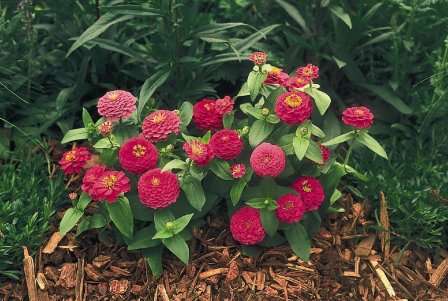 Zinnia needs sunshine
Zinnia needs sunshine
- Light. A flower needs a lot of light - in a shaded place it will not be as beautiful as it can be.
- Water. Zinnia graceful has standard requirements for the amount of moisture - it will disappear without watering during drought and when water stagnates after abundant watering or rains.
- Space. The plant does not like it when something grows too close to it.
- Top dressing. Zinnia is graceful and responsive to feeding. Growing in poor soil is fraught with a deterioration in the quality of flowering.
The cultivation of this plant is done in two ways:
- sowing seedlings,
- sowing in open ground.
 On poor soils, flowers weaken
On poor soils, flowers weaken
Seedling cultivation of zinnia
Seedlings will be ready for open field planting if the seeds are sown at the end of March or the first half of April. Planting can be carried out in boxes or separate containers, immersing the seeds to a depth of 1 cm.When two or three leaves appear, the seedlings must be dived. No more than three seedlings can be grown in one pot.
Until the time of planting seedlings under the open sky, the graceful zinnia is fed three times with mineral fertilizers intended for flowering plants. Shortly before this moment, it is advisable to temper the zinnia by exposing it to fresh air for several hours a day.
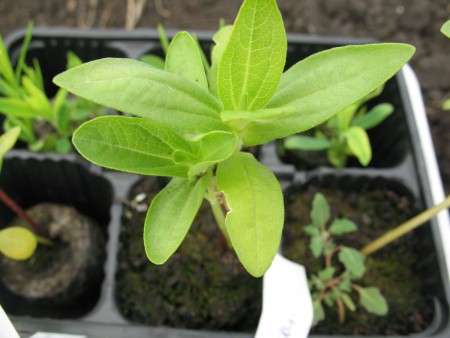 Zinnia graceful responsive to feeding
Zinnia graceful responsive to feeding
The stage of growing a flower in the open field can be started only during the period when the frost has completely passed, that is, from the end of spring. A distance of 30-35 cm is observed between individual plants. If you pinch the graceful zinnia over the third or fourth leaf, then the bush will subsequently turn out to be more lush. Do not forget about top dressing and regular watering of the plant in the open field.
Growing a flower by planting seeds in open ground
Planting of graceful zinnia seeds in a suburban area with seeds should be planned in late spring, when the temperature at night will not drop below 0 ° C. The depth of the planting holes is 5 cm. In each of them, throw a few seeds. Before the seedlings rise above the ground to a height of 10 cm, they should be broken through, leaving gaps of at least 30 cm. Of course, the strongest sprouts should be left.
When planting seeds in an open area, immediately after thinning the seedlings, it is necessary to fertilize with a complex fertilizer. If a sharp drop in air temperature is expected, cover the young plants with covering material. It is worth noting that when planting seeds in an uncovered area, you should expect later flowering.
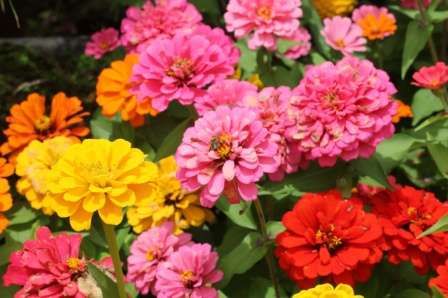 When planting seeds in open ground, flowering occurs later.
When planting seeds in open ground, flowering occurs later.
You can try growing graceful zinnias next year from your own seeds. To this end, collect them for storage when the seed pods turn brown and the seeds themselves are dry. Unfortunately, growing from your own seeds does not always give the expected result.
You cannot avoid the presented mood every time you appear in a suburban area, if graceful zinnia flaunts there. Growing from seeds is not a complicated process. In the overwhelming majority of cases, it is doomed to success.
Watch a video about planting zinnia seeds for seedlings
Varieties and varieties of zinnia: photo and description
Zinnia graceful
According to the height of the zinnias, the shape of the reed flowers and the structure of the inflorescences, the flowers are divided into several groups:
- chrysanthemum;
- dahlia;
- gaiardiocytes;
- scabiosa;
- fantasy;
- pompom.
In our country, the most popular varieties of pompom and dahlia zinnias, sometimes a fantasy variety is planted.
As a rule, seeds are commercially available in a mixture, but today, with the development of garden design, the need for seeds, divided by color and variety, has increased.
Dahlia group of graceful zinnia
Dahlia zinnias are compact, spreading or vigorous shrubs, 65-95 cm tall, with few branches of the lower order. The leaves are large, up to 14 cm long. The inflorescences are terry, large, hemispherical, 11-16 cm in circumference. Ligulate flowers are tiled with slightly raised edges, elongated-lobed appearance.
Some varieties of dahlia zinnia
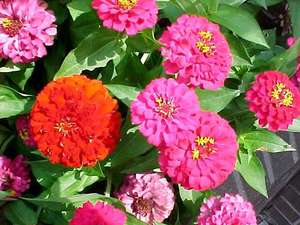 Raspberry Monarch is a bush 65-76 cm high, spreading. Inflorescences are dense, double, sometimes large and loose, dark red, 12-14 cm in circumference. Inflorescences that bloom 17-26. Blooms from early summer until frost.
Raspberry Monarch is a bush 65-76 cm high, spreading. Inflorescences are dense, double, sometimes large and loose, dark red, 12-14 cm in circumference. Inflorescences that bloom 17-26. Blooms from early summer until frost.
Violet is a bush with a height of 64-80 cm, spreading. Inflorescences are dense, double, 11-13 cm in circumference, purple, of different shades. Inflorescences that bloom 17-24. Blooms from early summer until frost.
Orange King is a bush 66-75 cm high, spreading. Inflorescences are large, bright red-orange, medium density, double, 13-16 cm in circumference. Inflorescences that bloom 19-23. Blooms from early July until frost.
Lavender Queen is a bush 70-85 cm high, spreading. Lavender inflorescences with a purple hue, terry, dense, 11-13 cm in circumference. Inflorescences that bloom 18-24. The Lavender Queen blooms from early summer to frost.
Purple Prince - plant height up to 65 cm, with large purple inflorescences, blooms from late June until frost.
Envy - plant height 64-75 cm, with green double inflorescences, in a circle of 11-14 cm. The most unusual and, most likely, from this the most popular type of zinnias today. Begins flowering from early July until frost. Looks very advantageous against a contrasting background of purple and pink flowers.
The polar bear is a compact, 64-70 cm high bush. Inflorescences are dense, densely double, 13-16 cm in circumference, white with a slight green tint. Inflorescences that bloom 16-21. Blooms from early summer until frost.
Tango is a bush with a height of 64-75 cm, semi-spreading. Inflorescences are loose, double, red-orange, large, 8-12 cm in circumference. Inflorescences that bloom 17-29. Blooms from early summer until frost.
Rose is a bush 55-70 cm high, spreading. Inflorescences are large, medium-dense, terry, 11-13 cm in circumference, pink in different tones. Inflorescences that bloom 16-21. Blooms from early summer until frost.
Purple - a bush 65-85 cm high, spreading. Inflorescences are large, loose, terry, 11-14 cm in circumference, deep red. Blooms from early summer until frost.
Cherry Queen - plant height up to 75 cm, with large rich cherry baskets blooming from early summer until frost.
Pompom group of graceful zinnia
These are shrubs 44-60 cm high, densely branched, compact, with a large number of branches, 2-4 rows. The leaves are small. Inflorescences are small, rounded, cap-shaped, 4-5 cm in circumference, terry, very dense. Reed flowers are tiled, small. Flowering is simultaneous and abundant.
Varieties of pompom zinnia:
Solar circle. The bush is highly branched, 21-26 cm high. Inflorescences 3.1-3.6 cm in circumference, terry. The ligulate flowers are deep orange at the base and reddish-brown at the ends. Tubular - orange. Abundant flowering until frost.
Zinnia is prized by gardeners for its splendor, beauty, and a soft scent that does not cause headaches. Even when cut, the flowers can remain fresh for about a half month. Experienced flower growers consider these flowers to be just a godsend for their extraordinary beauty, unpretentiousness in care and ease of growing. If you are faced with the task of decorating your backyard territory, then zinnia is the perfect solution.

